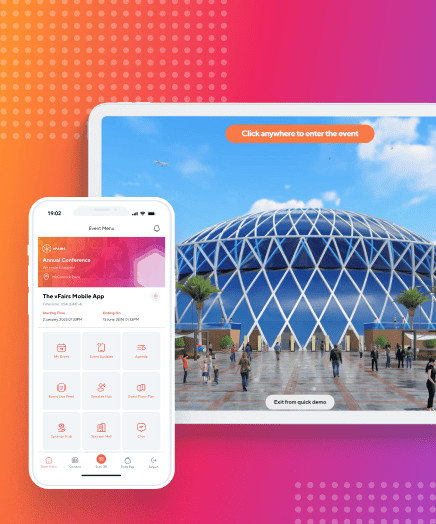Trade Fairs are events where businesses get to display their products and services to the attendees for sales and branding purposes. Virtual trade fairs-as the name explains-are the online versions of such events that allow exhibitors and attendees to interact in the virtual space. Virtual trade shows are becoming popular with every passing day. Organizations like Teradata and Jake’s Finer Foods have started taking their trade shows online. Issues like difficult event planning, poor audience engagement, limited reach and inclusivity, and the high cost of physical events are the main reasons for switching to virtual events.  Natalie Carter-Director of Marketing, Jake’s Finer Foods-shared her experience of a virtual trade fair organized by vFairs for Jake’s in the following words.
Natalie Carter-Director of Marketing, Jake’s Finer Foods-shared her experience of a virtual trade fair organized by vFairs for Jake’s in the following words.
“We love the whole vFairs experience. The event is easy to navigate and the platform has some fantastic features to really drive engagement and excitement. This format brings today’s latest technology to our industry, and we love the convenience.”
Virtual trade shows generate leads in real-time, increase event’s reach, enhance accessibility, result in immense cost savings, and provide measurable results. All of this is possible when the event organizer knows what is required from the event. Anyone can arrange a virtual trade fair but to organize a groundbreaking one requires certain things. Worry no more, this post is going to provide you with a list of tips to plan a killer virtual trade show in the easiest way possible. Here’s what you need to do.
- Have a Vision
- Come up with Quality Content
- Allocate Responsibilities
- Attract Attendees and Exhibitors
- Choose the Right Platform
Not sure why all this is required? Let us explain. 1. Have a Vision An event without a vision is a shot in the dark. It can be a complete waste of time and resources. To make your event a success, it is important to have a vision and know what you want to achieve. For example, an auto trade fair’s vision can be to sell 100 vehicles during the show worth $2000,000. This will become the foundation of the event and everything else will be planned accordingly. 2. Come up with Quality Content Based on the vision, formulate the content for the event. Before devising the content, answer the following questions by keeping attendees and exhibitors in mind.
- Why would they want to attend the event?
- How will the event add value to their life?
- What are their needs and wants?
- What will capture their interest and keep them engaged during the event?
Once you have answered these, and similar questions, you will know what to add to your event. Virtual trade fairs can have webinars, product pitches, presentations, audio/video chats, and digital content that can be accessed by the attendees. Webinars enhance the value of the event for the attendees and exhibitors. You can also upload promotional videos, brochures, white papers, and datasheets which can be easily accessed by the attendees and saved to their devices.
3. Allocate Responsibilities
Virtual events reduce the need for manpower. However, there are certain responsibilities that must be taken care of in a timely manner for an effective event. It would be good to allocate the responsibility for important tasks to trusted employees beforehand and prepare them for the event. For example, decide who will be manning the booths for group chat and who will make sure the speakers are ready for webinars. Also, make sure there is someone to overlook tech support and information booths during the event
4. Attract Attendees and Exhibitors
To make the most of a virtual trade fair, it is necessary to devise effective marketing strategies to attract a maximum number of attendees and exhibitors. The best way to attract the relevant audience for a virtual trade show will be to use online platforms like social media channels to spread the word. Find where your audience prefers to go for information or entertainment and capture them there. Some channels that can be used for marketing the event include the following.
- Company’s Website
- Email Marketing
- Search Engine Ads

5. Choose the Right Platform
As virtual trade shows are gaining popularity, the number of trade fair hosting platforms is also increasing. Currently, there are several players in the market such as vFairs, 6Connex, and Brazen. However, vFairs is leading the global virtual events market at the moment. With the highest customer reviews and rating on Capterra (100 reviews and an average rating of 4.8/5), vFairs has set the mark really high. It has hosted renowned clients like Sage and Teradata for virtual trade shows and offers high value for money. Conclusively, virtual trade shows are the future of trade fairs. The convenience, cost-saving, reach, and measurability provided by online trade shows is unmatched. Want to know how you can organize a virtual trade show? Visit vFairs now and book a free demo!


